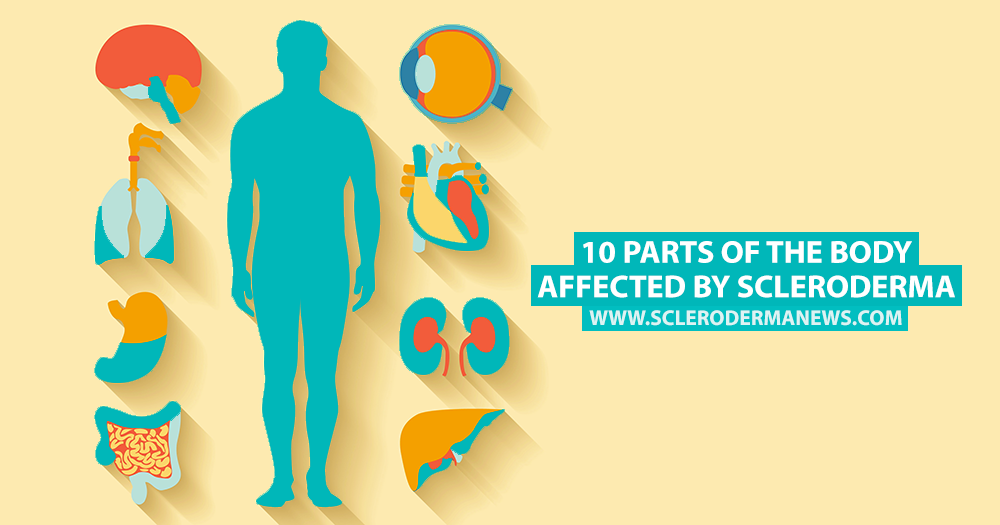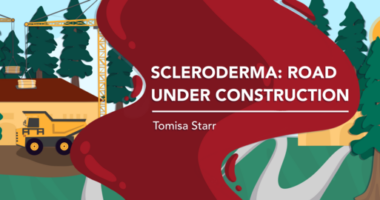10 Parts of the Body Affected by Scleroderma

Scleroderma or systemic sclerosis (SSc) is a rare autoimmune disease whereby the body produces too much collagen. The symptoms a person can present are widespread and many different parts of the body can be involved. According to the Scleroderma Foundation, these are the main areas of the body affected by scleroderma.
1. Vascular System
The vascular system is comprised of all of the veins and arteries in the body. Scleroderma tightens and constricts the vascular system, causing the veins and arteries to become inflamed and stretched leading to organ damage as the blood cannot flow freely. One of the most common conditions caused by scleroderma is Raynaud’s phenomenon. Vascular damage can also lead to pulmonary arterial hypertension.
MORE: Heart changes that can occur in scleroderma
2. Mouth
One of the most obvious symptoms of scleroderma is a tightening of the mouth area. This is due to the skin in the face contracting, making the mouth smaller. This can lead to trouble speaking and eating as movement of the lips and tongue can be constricted. In addition, problems with dental health are common it becomes much harder for patients to clean their teeth and gums adequately. Patients often suffer from a dry mouth as Sjögren Syndrome affects the saliva glands.
3. Hands
The hands are another very common part of the body affected by scleroderma. The blood flow to the fingertips decreases which manifests into painful digital ulcers. In addition, the tightening of the skin and joints in the hands and wrist can lead to contractures, leaving many patients unable to grasp things or use their hands properly, or to excessive swelling.
Raynaud’s phenomenon affects the hands by leaving them susceptible to changes in temperature and resulting in a bluish tint to the skin.
Calcinosis is deposits of calcium in the soft tissue in the hands leaving white, chalky patches.
MORE: Patients with scleroderma may develop calcinosis, study says
4. Musculoskeletal
Swelling and puffiness of the hands and feet are commonplace in scleroderma, particularly after periods of rest where circulation may be reduced.
Joint pain and stiffness all over the body with inflammation of the joints is also common for scleroderma patients.
5. Heart and Lungs
Scleroderma patients are at risk of several chronic lung diseases such as pulmonary fibrosis and pulmonary arterial hypertension as too much collagen can cause thickening and scarring of the lung tissue and the narrowing of arteries can lead to high blood pressure in the lungs. The over-production of collagen can also increase the risk of heart disease if scarring of heart tissue occurs.
MORE: Pulmonary blood flow changes during exercise could indicate pulmonary vascular disease progression, study finds
6. Kidneys
Increased blood pressure due to narrowed arteries can lead to renal crisis. Kidney involvement in scleroderma is fairly commonplace and without treatment can be life-threatening. Scleroderma patients need to have their kidneys and blood pressure checked regularly.
7. Brain
Living with a chronic disease often brings about depression and anxiety. In addition, scleroderma patients may also suffer from “brain fog” due to either the pain they experience or the medications they take.
MORE: The good, bad, and ugly of coping through social media
8. Digestive System
The digestive system and gastrointestinal tract can be affected by scleroderma. Anywhere from the mouth to the anus may be damaged due to excessive collagen production, which can result in abdominal pain, diarrhea, constipation, and difficulties swallowing.
9. Eyes
Sjögren Syndrome is a condition commonly associated with scleroderma. It affects the glands which produce tears and saliva, resulting in dry eyes and mouth.
10. Skin
The skin is the body’s biggest organ and the one most affected by scleroderma. The over-production of collagen means that skin becomes taut and stretched resulting in a host of problems. Raynaud’s phenomenon, calcinosis, ulcerations, dry and itchy skin, and pigmentation are all common in scleroderma patients.
Scleroderma News is strictly a news and information website about the disease. It does not provide medical advice, diagnosis or treatment. This content is not intended to be a substitute for professional medical advice, diagnosis, or treatment. Always seek the advice of your physician or another qualified health provider with any questions you may have regarding a medical condition. Never disregard professional medical advice or delay in seeking it because of something you have read on this website.






